E-rate Sparks Low-Cost Connectivity, Better Digital Learning
EdTech Magazine
OCTOBER 2, 2017
By EdTech Staff Once schools receive E-rate funding, innovating learning can develop.
This site uses cookies to improve your experience. By viewing our content, you are accepting the use of cookies. To help us insure we adhere to various privacy regulations, please select your country/region of residence. If you do not select a country we will assume you are from the United States. View our privacy policy and terms of use.

EdTech Magazine
OCTOBER 2, 2017
By EdTech Staff Once schools receive E-rate funding, innovating learning can develop.

Digital Promise
JANUARY 8, 2019
At the same time, innovative education leaders and classroom teachers are engaging, motivating, and nurturing students to develop mindsets for college and career readiness and lifelong learning, and they are supporting social and emotional development. There are three parts to the problem—access, participation, and powerful use.
This site is protected by reCAPTCHA and the Google Privacy Policy and Terms of Service apply.

Education Superhighway
FEBRUARY 19, 2019
She is the current Digital Access Coordinator for the Learning Technology Center of Illinois (LTC) and an Illinois State E-rate Coordinator. She has worked in educational technology for nearly two decades, empowering educators to integrate digital learning in the classroom.

Digital Promise
APRIL 29, 2019
To better understand how using technology can create equity in schools, we’ll outline how technology creates more equitable situations in the classroom. Technology isn’t the only tool we can use to create equitable learning environments, but there are a few ways it can assist in that mission. Here are some examples.

Digital Promise
JANUARY 13, 2015
One of those programs is the Universal Service Program for Schools and Libraries, better known as E-rate. E-rate helps schools and libraries get affordable Internet access by discounting the cost of service based on the school’s location – urban or rural – and the percentage of low-income students served.
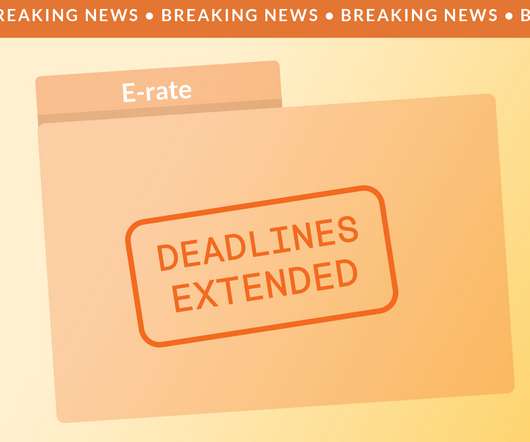
Education Superhighway
APRIL 1, 2020
On April 1, 2020, the FCC announced extensions of several key E-rate deadlines to provide relief to program participants affected by the COVID-19 outbreak. These extensions have been put in place to alleviate administrative burdens while most public schools have closed and are transitioning to remote learning.

Education Superhighway
OCTOBER 31, 2017
In 2014, the Federal Communications Commission modernized the E-rate program with the objective of closing the K-12 digital divide within five years. As a result, 35 million more students have been connected to digital learning and educational opportunity. Why has E-rate modernization worked so well?

Education Superhighway
JANUARY 23, 2019
One of the most important features of E-rate is that it set an annual target of $1 billion annually to help schools upgrade their internal networks and implement Wi-Fi in every classroom. That amounts to $150 in E-rate Category 2 funding per student, to deploy a robust LAN / Wi-Fi network.
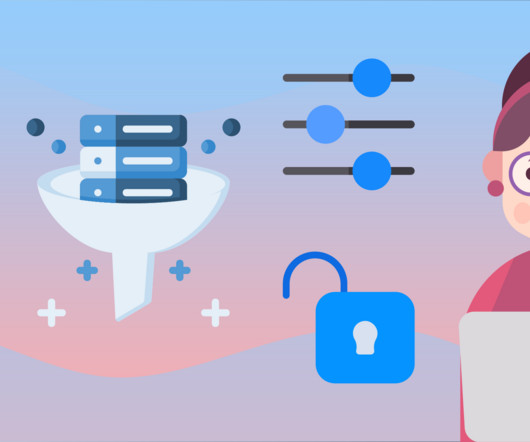
Hapara
MARCH 13, 2023
Listen to an audio version of this post: [link] A digital learning environment offers students all kinds of options for research, class projects, collaboration, activities and assessments. So how do you manage web filtering so that it protects students but doesn’t restrict learning?
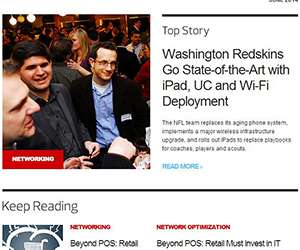
EdTech Magazine
MAY 5, 2020
For school districts implementing e-learning plans, a key concern is ensuring equity and access to learning materials for all students. Some students may not have access to the devices needed to complete e-learning activities, while others may not be able to connect to the internet from home.

EdTech Magazine
DECEMBER 26, 2018
School Districts Take Advantage of E-Rate’s Category One Funding. Once its existing WAN provider wanted to charge significantly more for the same bandwidth speed, Midlothian Independent School District administrators began shopping for a faster, more affordable network — and they got one this summer with the help of E-rate fund s.

Education Superhighway
MARCH 17, 2020
The extension of the application deadline means that any Form 470 filed on or before April 1, 2020, will be within the E-rate program’s 28-day competitive bidding requirement. For additional information, please visit the USAC E-rate homepage. 5 Things To Remember When Filing Your E-rate Form 470.

eSchool News
JANUARY 3, 2024
Do all students have access to the internet? The latest statistics come from Connected Nation’s (CN) Connect K-12 Program’s 2023 Report on School Connectivity , released in collaboration with Funds For Learning (FFL). How does lack of internet access affect students? Key points: U.S. org website.

EdTech Magazine
MAY 12, 2020
For school districts implementing e-learning plans, a key concern is ensuring equity and access to learning materials for all students. Some students may not have access to the devices needed to complete e-learning activities, while others may not be able to connect to the internet from home.

EdTech Magazine
MAY 9, 2020
For school districts implementing e-learning plans, a key concern is ensuring equity and access to learning materials for all students. Some students may not have access to the devices needed to complete e-learning activities, while others may not be able to connect to the internet from home.

EdTech Magazine
MAY 7, 2020
For school districts implementing e-learning plans, a key concern is ensuring equity and access to learning materials for all students. Some students may not have access to the devices needed to complete e-learning activities, while others may not be able to connect to the internet from home.

EdTech Magazine
MAY 7, 2020
For school districts implementing e-learning plans, a key concern is ensuring equity and access to learning materials for all students. Some students may not have access to the devices needed to complete e-learning activities, while others may not be able to connect to the internet from home.

EdTech Magazine
MAY 6, 2020
For school districts implementing e-learning plans, a key concern is ensuring equity and access to learning materials for all students. Some students may not have access to the devices needed to complete e-learning activities, while others may not be able to connect to the internet from home.

EdTech Magazine
MAY 6, 2020
For school districts implementing e-learning plans, a key concern is ensuring equity and access to learning materials for all students. Some students may not have access to the devices needed to complete e-learning activities, while others may not be able to connect to the internet from home.
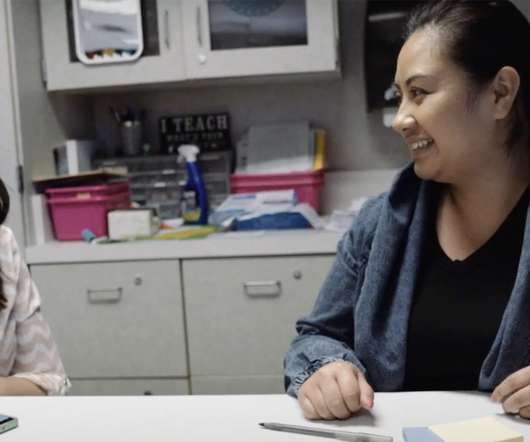
Digital Promise
JULY 20, 2020
The different factors that we know impact learning encompass the whole child—not just their math and literacy skills but also their cognitive abilities, social-emotional states, and their personal background. All of these factors interact to impact a child’s readiness to learn when they come into the classroom.

eSchool News
OCTOBER 26, 2015
Common Sense, SETDA unveil toolkit to help states, schools apply for billions in federal aid under the E-rate program modernization. A new E-rate funding toolkit from Common Sense and SETDA explains the changes to the federal program, available funding, and best ways to apply for it.

Education Superhighway
JANUARY 7, 2019
In the past few years, concerted efforts like E-rate modernization and various statewide initiatives have helped bring digital learning opportunities to students across the nation. Let’s look at three examples of how digital learning is changing the face of today’s classroom learning.

Education Superhighway
NOVEMBER 27, 2017
Walking into a Merritt Elementary School classroom today, you’ll find students using iPads to figure out math problems and submit their answers, while teachers grade those answers and provide feedback and follow-up support in real-time. Now, teachers create their own curriculum in iTunes U, and the majority of classrooms are paperless.

Education Superhighway
JANUARY 9, 2017
With just over two million people living in New Mexico and almost 700,000 of them spread across rural regions, many New Mexico students still lack access to the high-speed broadband necessary to take advantage of digital learning in the classroom. Learn more about our Broadband Upgrade Consulting Program.

eSchool News
MARCH 26, 2018
This year’s E-rate cycle may be over, but in order to be well prepared for the next one, now is the time to start the connectivity conversation with your school district. In today’s classrooms, high-speed internet is no longer an option; it has become a necessity. Here are three questions to help start the discussions: 1.

eSchool News
MARCH 16, 2018
A federal report on students’ home access to digital learning resources is months late, and ed-tech groups say the delay is impeding efforts to close the homework gap. ” Next page: Why low-income students could be even more at risk for losing internet access. “This is critical.”

EdTech Magazine
OCTOBER 3, 2018
In education, software programs lend a helping hand just about everywhere, from device management to digital learning. GoGuardian Admin offers adjustable, policy-based filtering that blocks prohibited sites and alerts administrators when students attempt to access inappropriate content, even on a permitted site.
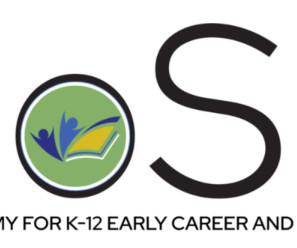
eSchool News
APRIL 5, 2024
Academy participants make a positive impact on student-centered and digital learning in their school district and enhance their career trajectory. 00:02:53 Speaker 2 So, I mean, I’ve always been involved in educational technology, you know, been a classroom teacher, came through 12, taught pretty much at every grade level.

techlearning
SEPTEMBER 27, 2018
The CoSN Meeting the Needs of Students Without Home Internet Access webinar on September 19, 2018 reflects the growing concern and call to action for school districts, business communities and state and federal government to address what has been termed as the homework gap. 1 at the elementary level.

Edsurge
MAY 7, 2020
Good teaching is good teaching, regardless of whether it happens in a classroom, on Zoom or any other delivery modality. Course Materials Journals: Hybrid Pedagogy ; Online Learning “ Best Practices for Teaching with Emerging Technologies ,” by Michelle Pacansky-Brock (book), describes practical tools to support student learning.

Education Superhighway
FEBRUARY 10, 2020
Over the past eight years, WANRack has worked with schools and communities to close the digital divide and ensure students have access to digital learning in every classroom, every day. With the increasing use of technology as a tool for learning, students and teachers need more than basic connectivity.

Neo LMS
SEPTEMBER 3, 2020
Whether you’re an experienced educator or a parent struggling to adjust to remote learning in the face of the national lockdown, chances are good that you’re looking for ideas to help your student, or students, thrive in the unfamiliar world of the virtual classroom. The key is to learn what works best for each of them.

Education Superhighway
DECEMBER 27, 2017
In the effort to ensure that all students have equal access to the broadband they need for digital learning, there are challenges and triumphs every year. There is no doubt, however, that incredible progress has been made in connecting America’s classrooms to high-speed Internet.

The Hechinger Report
OCTOBER 23, 2019
But EducationSuperHighway did it this week, announcing that the classroom internet connectivity gap is effectively closed – one year ahead of schedule, no less. And Marwell wants all of them to experience the types of teaching and learning high-speed internet access facilitates. Their plan seems to have worked.
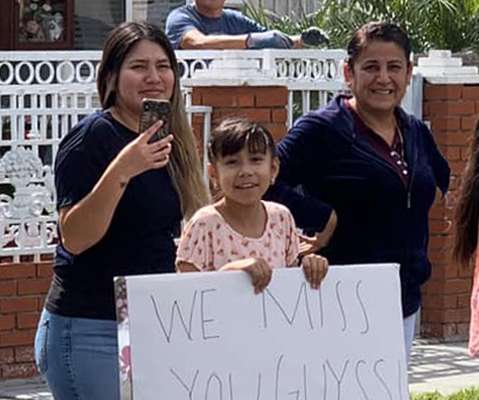
Digital Promise
MAY 27, 2020
With digital learning likely to stretch into the fall due to COVID-19, how can we ensure every student has equitable access to powerful learning opportunities? The crisis has shone a harsh light on the digital divide in the United States, surfacing thoughtful debate and long-overdue discussion around the equity gap.

Doug Levin
FEBRUARY 2, 2016
Be explicit with districts about expectations for access to technology in schools and classrooms. It should not be controversial in 2016 that there is a baseline expectation of access to technology in schools, just as there are baseline expectations for access to textbooks and desks.

ExcelinEd
APRIL 5, 2019
Visit EducationSuperHighway.org to learn how your state can upgrade internet access in every public school classroom to empower more students to take advantage of the promise of digital learning. ” USED Office of Educational Technology , Building Technology Infrastructure for Learning. .

eSchool News
JANUARY 3, 2017
Compare & Connect K-12, which launched in beta in early 2016 and is now fully launched and available, displays public E-rate application data and lets users explore bandwidth speeds and compare broadband prices with school districts in a specific region or in any state across the country.

Digital Promise
JANUARY 16, 2015
Students were excited about learning. Something else that was immediate and dramatic: the gap between students who had Internet access at home, and those who didn’t. “You can’t just send them home with an assignment or some research to do, because they have no access.”

eSchool News
MARCH 7, 2016
Statewide ed-tech inventories are helping state leaders assess their digital learning needs. It was the 100-percent response rate from the survey. “We We knew most districts and schools would respond, but a 100-percent response rate shows that technology is a high priority for education leaders throughout the state,” he said.
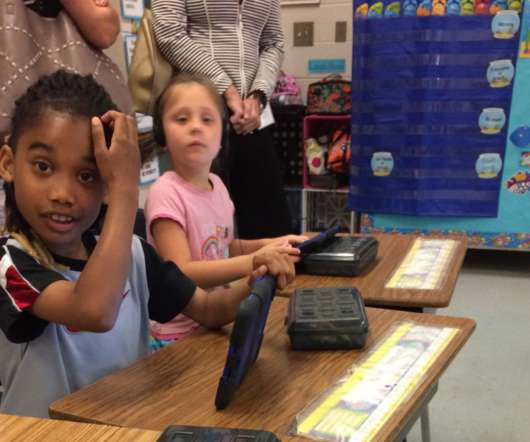
eSpark
APRIL 13, 2022
Integrating new technology into a classroom can be intimidating. Many teachers worry that they will need to spend hours learning how to use new edtech before being able to successfully implement it in the classroom. Ready to see what eSpark can do for your classrooms? Get Started.

Education Superhighway
DECEMBER 14, 2017
One of the most important features of E-rate is that it allots $3.9 billion annually to help schools upgrade their internal networks and implement Wi-Fi in every classroom. To date, only 50% of that available E-rate funding has been utilized. Access RFP templates and other tools to help you with your upgrade.

Educator Innovator
FEBRUARY 24, 2014
Digital Learning Day (DLD), held on February 5, immersed kids from coast to coast in activities like tinkering with robotics, penning blog posts, and painting digital canvases. As educators know, integrating meaningful digital learning into the classroom is a 365-day effort. So it should be with E-Rate.
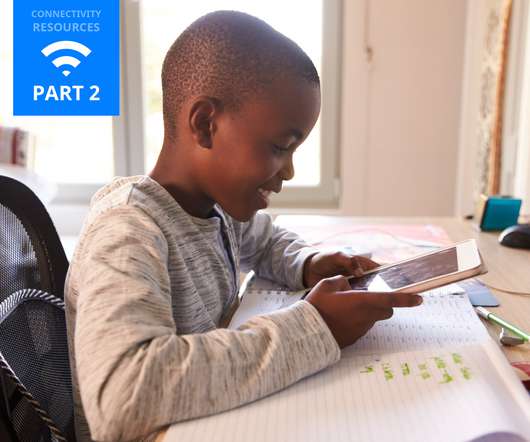
Education Superhighway
APRIL 8, 2020
As schools all around the country are closing due to COVID-19 and classrooms are moving online, many districts are scrambling to support their educators and students with distance learning. Tripling data allowance for Verizon Innovative Learning middle schools. Mint Mobile (T-Mobile network). Boost Mobile (Sprint network).
Expert insights. Personalized for you.
Are you sure you want to cancel your subscriptions?


Let's personalize your content